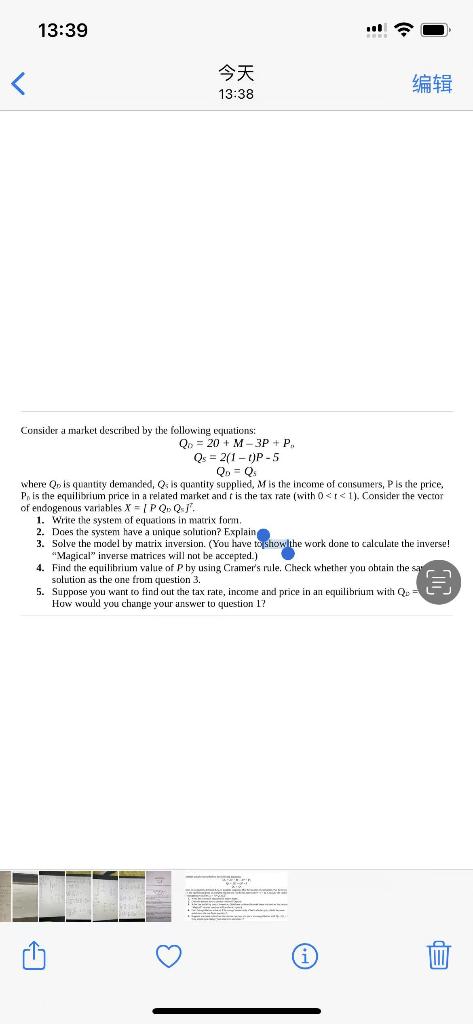Home /
Expert Answers /
Economics /
consider-a-market-described-by-the-following-equations-begin-array-c-q-o-20-m-3-p-p-n-pa129
(Solved): Consider a market described by the following equations: \[ \begin{array}{c} Q_{o}=20+M-3 P+P_{n} \ ...
Consider a market described by the following equations: \[ \begin{array}{c} Q_{o}=20+M-3 P+P_{n} \\ Q_{s}=2(1-t) P-5 \\ Q_{0}=Q_{s} \end{array} \] where \( Q_{0} \) is quantity demanded, \( Q \) is quantity supplied, \( M \) is the income of consumers, \( P \) is the price, \( P_{0} \) is the equilibrium price in a related market and \( t \) is the tax rate (with \( 0<1<1 \) ). Consider the vector of endogenous variables \( X=\lfloor P Q \mathrm{Q} Q \leqslant\}^{*} \). 1. Write the system of equations in macrix form. 2. Does the system have a unique solution? Explain 3. Solve the model by matrix inversion. (You have to shcwaithe work done to calculate the inverse! "Magical" inverse matrices will not be accepted.) 4. Find the equilibrium value of \( P \) hy using Cramer's rule. Check whether you obtain the solution as the one from question 3 . 5. Sappose you want to find out the tax rate, income and price in an equilibrium with \( Q_{D} \) How would you change your answer to question 1?
